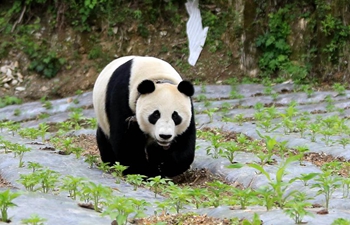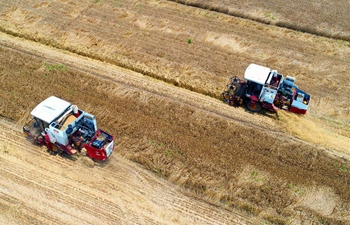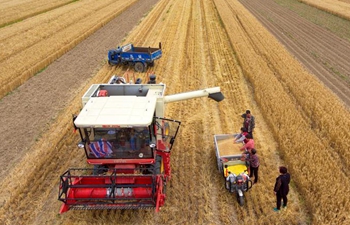WASHINGTON, May 31 (Xinhua) -- In two papers published on Thursday in the journal Cell, two teams of researchers identified a gene family found only in humans that appears to play a critical role in the development of large brains in past three million years.
A set of three nearly identical genes called NOTCH2NL delay the differentiation of cortical stem cells into neurons, resulting in the production of more neurons across the course of development, according to the study.
The genes are found exclusively in humans, are heavily expressed in neural stem cells of the human cerebral cortex, but are also located on a part of the genome implicated in neurodevelopmental disorders.
"Our brains got three times as big primarily through the expansion of certain functional areas of the cerebral cortex, and that has to be a fundamental substrate for us becoming human," said David Haussler, co-senior author of one of the papers and a bioinformatician at the University of California, Santa Cruz, and Howard Hughes Medical Institute.
The team led by Haussler and co-senior authors Frank Jacobs of the university compared those genes expressed during brain development in humans and macaque monkeys in stem cell-derived models, and they realized that they could detect NOTCH2NL in human cells but not in those of the macaques.
Looking at the DNA, they also didn't see it in orangutans and found only truncated, inactive versions in human closest relatives, gorillas and chimpanzees, according to the study.
Reconstructing the evolutionary history of NOTCH2NL genes revealed that a process called gene conversion was likely responsible for repairing a non-functional version of NOTCH2NL, which originally emerged as a partial duplication of an essential neurodevelopmental gene known as NOTCH2.
This repair was estimated to have happened three to four million years ago, around the same time that the fossil record suggests human brains began to expand.
"After it was repaired, but before we diverged from our common ancestor with Neanderthals, NOTCH2NL was duplicated two more times," the paper said.
The team behind the other paper, led by developmental biologist Pierre Vanderhaeghen of Université Libre de Bruxelles ULB and VIB-KU Leuven, arrived at NOTCH2NL from a related direction, searching for human-specific genes active during fetal brain development using primary tissue.
The Vanderhaeghen team developed a tailored RNA sequencing analysis for specific and sensitive detection of human-specific genes in human fetal cerebral cortex. This allowed them to identify a repertoire of 35 genes unique to humans that are active during development of the cerebral cortex in humans, including NOTCH2NL genes.
They zeroed in on NOTCH2NL in particular because of the importance of its ancestral gene, NOTCH2, in signaling processes that control whether cortical stem cells produce neurons or regenerate more stem cells.
They found that artificially expressing NOTCH2NL in mouse embryos increased the number of progenitor stem cells in the mouse cortex.
To better understand what the genes do in humans, the team turned to an in vitro model of cortical development from human pluripotent stem cells to explore NOTCH2NL function.
In this model, they found that NOTCH2NL can substantially expand the population of cortical stem cells, which in turn then generate more neurons, a feature expected to distinguish between human and non-human cortical neurogenesis.
Haussler's team looked at what happened when NOTCH2NL wasn't expressed. They deleted it from human stem cells and used them to grow patches of cortex called organoids.
In the organoids derived from NOTCH2NL-depleted stem cells, differentiation occurred faster, but the organoids ended up being smaller.

















